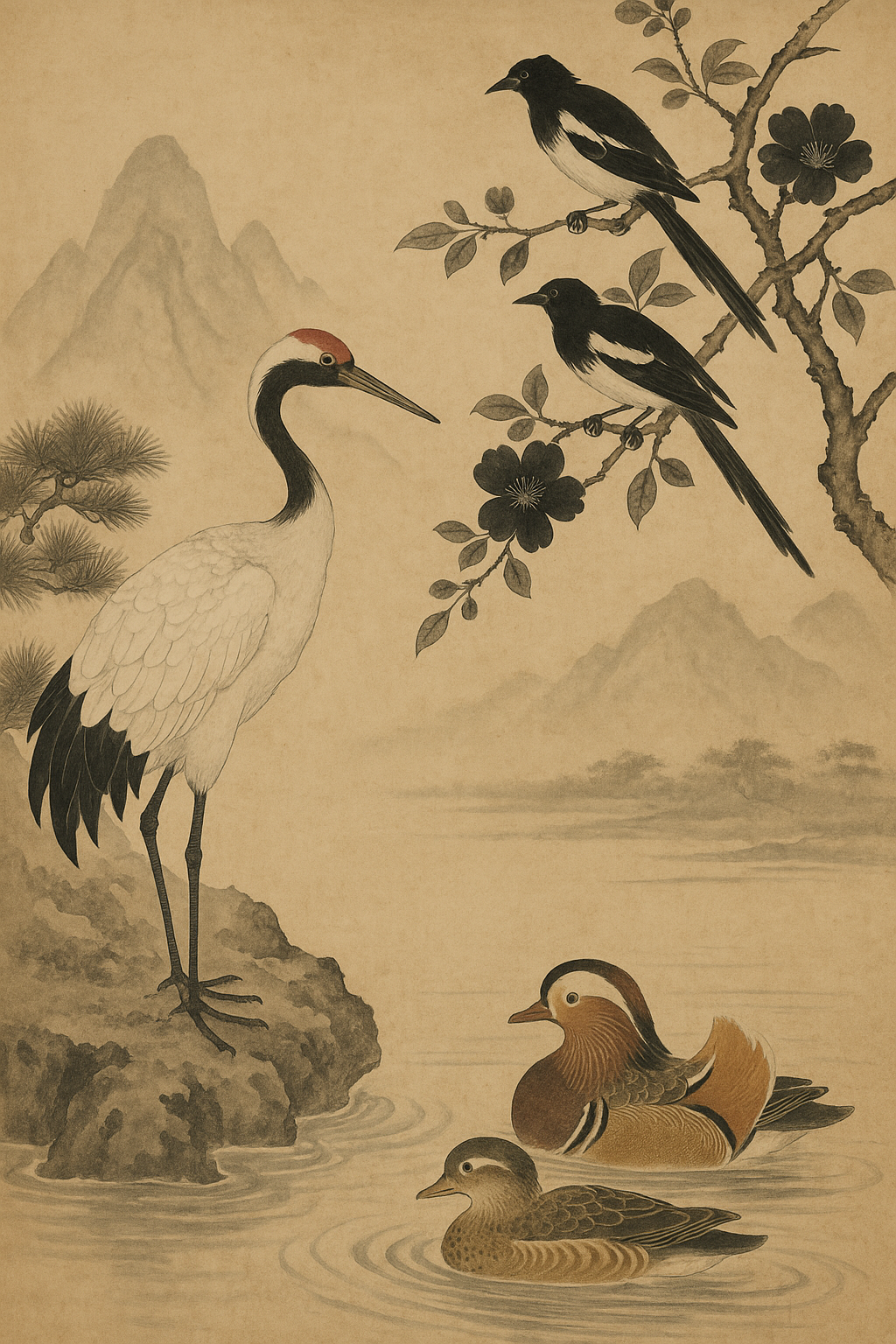
Birds of Blessing: Meanings of Birds in Chinese Culture
Introduction
In Chinese life, birds are more than creatures of nature—they “carry messages”: joy, protection, wishes, and love. From the Classic of Poetry to court paintings and auspicious motifs, birds embody layered meanings. Here are a few emblematic species—fact-based, warm in tone—that reveal this living tradition.
Cranes: Longevity & Heavenly Auspice
In Daoist symbolism cranes signify longevity and otherworldliness, even serving as vehicles of immortals. Emperor Huizong’s Auspicious Cranes (1112) records cranes circling the capital gate—a benevolent omen interpreted as peace and good governance.
Magpies: Messengers of Joy
Because the word for magpie (xique) puns on “happiness,” magpies commonly signify good news—often shown in pairs or perched on plum to herald spring. The British Museum and other institutions note magpies as birds of joy in Chinese art.

Mandarin Ducks: Fidelity & Love
Because mandarin ducks pair for life, they became a standard symbol of conjugal harmony in paintings and wedding gifts—an association documented by the National Museum of Asian Art (Smithsonian).
Swallows: Tidings of Spring
Swallows, nesting under eaves and returning with the seasons, are widely taken as messengers of spring—a view reflected in cultural notes on Beijing’s old nickname “Yanjing” and in modern cultural histories.
Fenghuang (Chinese Phoenix): Sovereignty & Harmony
The fenghuang, attested as early as Shang oracle-bone inscriptions, became an imperial omen of harmony and virtue—often paired with the dragon as a yin–yang emblem of auspicious rule.
Conclusion
Birds in Chinese culture tie nature to the human heart. From eaves and branches to painted silk, they carry good news, good days, and good wishes—right into our everyday lives.
